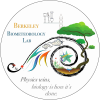Reports
Contents
| Title: | East Pond - NDVI (SRS, Planet) | ||||||||||||||||||||||||
| Date: | 2018-05-17 - 2020-01-29 | ||||||||||||||||||||||||
| Data File: | EP_NDVI.csv | ||||||||||||||||||||||||
| Refers to: | EP,2046503368,2046503402 | ||||||||||||||||||||||||
|
Various sensors measuring NDVI have been installed across the Delta sites over the last several years. At some sites, the SRS sensors from Decagon/METER have been drifting low, so I wanted to compare them with other NDVI measurements.
For some sites with I also compared GCC with the various NDVI values to see how much GCC values varied year over year. Photos were taken by a variety of cameras: Netcam Stardot cameras (the official camera of the Phenocam Network®), Canon point-and-shoot cameras with custom firmware, or a Raspberry Pi camera. I used Joe's datafetch tool to calculate daily average mid-day values of NDVI and GCC from the various sensors. Mid-day values included data from 11:00 to 13:00, 5 values a day. I despiked the data in Excel.
See reports for other Delta sites here: East Pond / Sherman Wetland Temp Tower (both sites had same set of SRS sensors) Twitchell Alfalfa / Sherman Barn (both sites had same set of SRS sensors) Â
ÂFigure 1. East Pond NDVI. SRS NDVI is about 0.2 lower than broadband NDVI year round. Something happens around 2019-12-05 with the SRS sensor, and data looks bad after that. Â Figure 2. Individual bands of SRS sensor. 650in goes bad starting Dec 2019. Â Figure 3. Red reflectances from SRS data. Again, I wouldn't trust the data starting Dec 2019 as the reflectance is much higher than it was in winter 2018-2019. Â Figure 4. NIR reflectances from SRS data. Seems fine. Â
Figure 5. Linear regression between SRS and broadband NDVI. Fit is affected by the cluster on the lower left part of the graph from low SRS values starting Dec 2019. Â
Figure 6. Linear regression between SRS and broadband NDVI without the bad SRS data. Fit is much better, R2=0.90. Slope has increased from 0.67 to 0.80 after removing bad data. Â Figure 7. Timeseries of GCC and SRS data. Annual patterns seem reasonable. GCC keeps decreasing from Jan-March while NDVI bottoms out in Jan. Both GCC and NDVI start increasing in mid-March and peak around mid-August before decreasing. Â
Figure 8. Linear regression between GCC and SRS data. Fit is affected by the cluster on the lower left part of the graph from low SRS values starting Dec 2019. Â
Figure 9. Linear regression between GCC and SRS data without the bad SRS data. Fit is better, R2=0.80, and slope decreased from 3.9 to 3.1after removing bad data. |
|||||||||||||||||||||||||
| |

